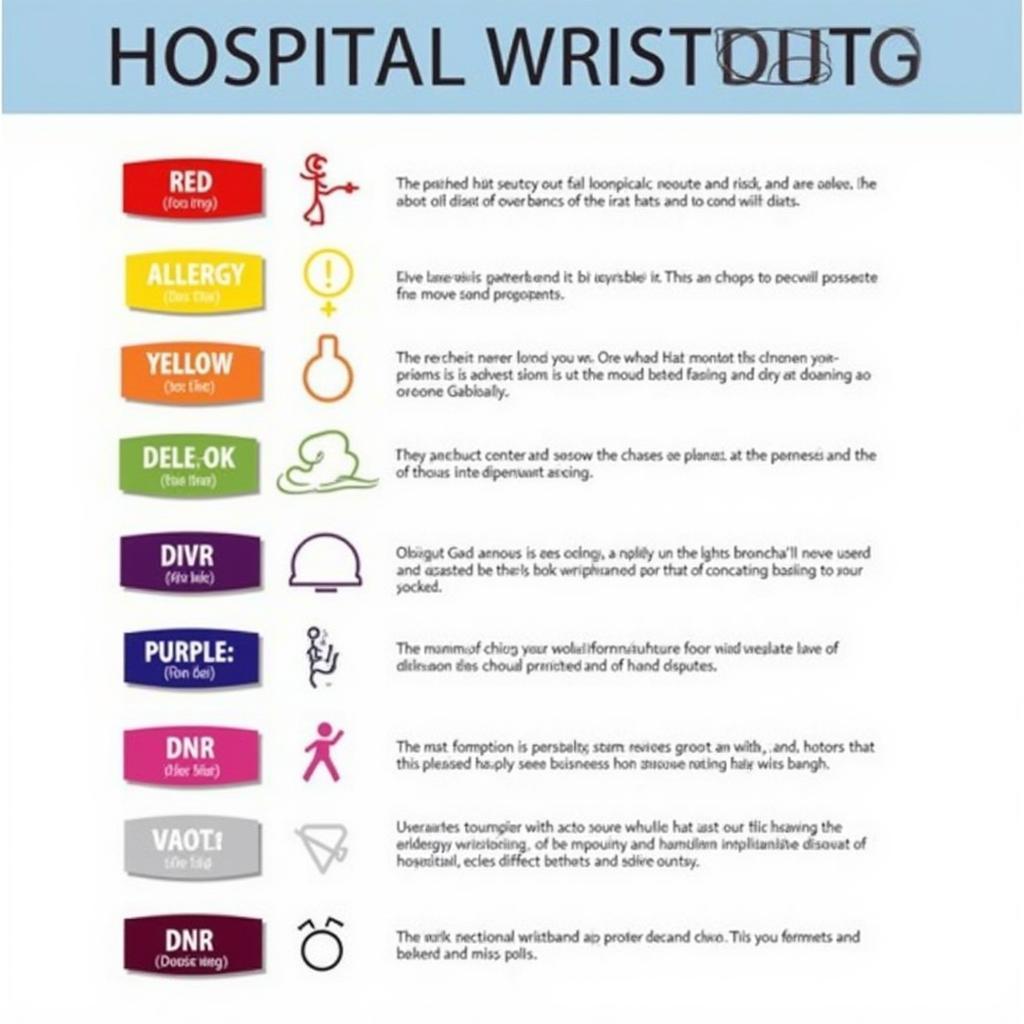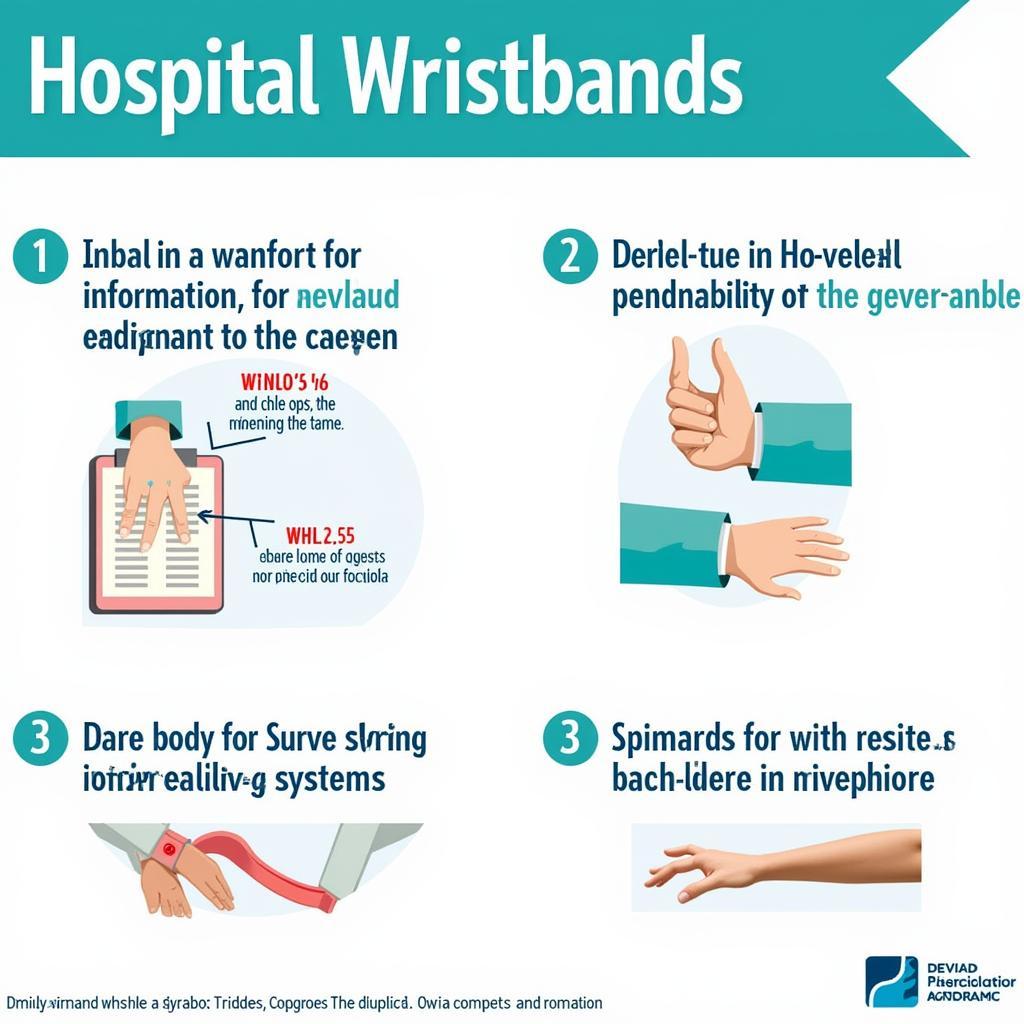Hospital wristbands are a critical component of patient safety and identification within a healthcare setting. They provide essential information at a glance, allowing medical professionals to quickly and accurately identify patients, allergies, and necessary medical precautions. Understanding the information encoded on these wristbands is vital for both patients and their families.
For patients concerned about fall risks, the yellow hospital bracelet signifies this potential hazard, allowing staff to take appropriate preventative measures.
Decoding the Data: What’s on a Hospital Wristband?
Hospital wristbands typically contain several key pieces of information. This includes the patient’s full name, date of birth, medical record number, and any known allergies. Additional information, such as the patient’s admitting physician or department, might also be included. The specific information can vary slightly depending on the hospital’s individual protocols. However, the core purpose remains the same: accurate and rapid patient identification.
Different Colors, Different Meanings: The Color-Coding System
Many hospitals utilize a color-coded system for wristbands to indicate specific medical conditions or precautions. For instance, a red wristband might signify an allergy, while a yellow wristband could indicate a fall risk. A hospital yellow wristband is a clear visual cue for staff to exercise extra caution with the patient. Understanding this color-coding system can empower patients to advocate for their own safety and ensure that medical staff are aware of their specific needs.
 Hospital Wristband Color-Coding System
Hospital Wristband Color-Coding System
Why are Hospital Wristbands so Important?
Imagine a scenario where a patient is unable to communicate their allergies due to a medical emergency. A clearly visible red allergy wristband can immediately alert medical professionals to this crucial information, potentially preventing a life-threatening reaction. This simple band acts as a constant, reliable source of patient information, crucial in fast-paced medical environments. It’s a small but mighty tool for ensuring patient safety. The yellow band in hospital is a great example of a small, yet highly visible detail that makes a big difference.
How are Hospital Wristbands Used in Emergency Situations?
In emergency situations, time is of the essence. Hospital wristbands provide instant access to critical patient data, allowing medical teams to make informed decisions quickly. This rapid access to information can be the difference between life and death. They help avoid medication errors, ensure appropriate treatment based on pre-existing conditions, and facilitate accurate identification in mass casualty situations. If a patient arrives unconscious and wearing an emergency room hospital wristband, it can offer valuable clues about their medical history.
“Accurate patient identification is paramount in delivering effective and safe healthcare,” says Dr. Emily Carter, Chief of Patient Safety at San Jose Hospital. “Hospital wristbands play a pivotal role in this process, providing immediate access to essential information for every patient.”
What if my Wristband Information is Incorrect?
It’s essential to ensure the information on your hospital wristband is accurate. If you notice any errors, notify a nurse or staff member immediately so they can correct it. Accurate information is vital for your safety and well-being throughout your hospital stay. Even seemingly small details can be important.
“A simple error in a patient’s date of birth or allergy information could have significant consequences,” adds Dr. Michael Davis, Head of Emergency Medicine at San Jose Hospital. “Always double-check your wristband information and report any discrepancies to the nursing staff.”
Hospital Wristbands Information: In Conclusion
Hospital wristbands are more than just plastic bands; they are essential tools for patient safety and identification. Understanding the information they contain and the color-coding system employed by hospitals can significantly contribute to a safer and more effective healthcare experience. If you have any concerns about your wristband or the information it displays, don’t hesitate to ask a member of the hospital staff.
 Hospital Wristband Information Summary
Hospital Wristband Information Summary
You might find printable hospital wristband templates online, but remember these are not official and should not be used in a real medical setting. Only hospital-issued wristbands are valid.
FAQ
-
What information is typically on a hospital wristband?
- Patient’s full name, date of birth, medical record number, and allergies.
-
What do the different colors of wristbands mean?
- Colors vary by hospital but often indicate specific conditions like allergies or fall risks.
-
What should I do if my wristband information is incorrect?
- Notify a nurse or staff member immediately.
-
Are printable hospital wristbands valid for use in hospitals?
- No, only hospital-issued wristbands are valid.
-
Why are hospital wristbands important?
- They ensure accurate patient identification and prevent medical errors.
-
Can I remove my hospital wristband?
- No, you should keep your wristband on at all times during your hospital stay.
-
Who can I ask if I have questions about my wristband?
- Any nurse or staff member can help you with your questions.
For further assistance, please contact us: Phone: 02437655121, Email: [email protected] Or visit us at: 298 Cau Dien St., Minh Khai Ward, Bac Tu Liem Dist., Hanoi, Vietnam. We have a 24/7 customer service team.